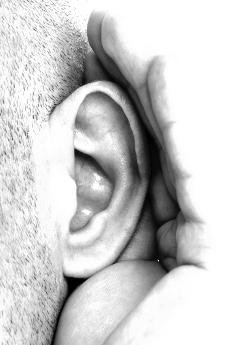Chip helps bring bionic hearing inside
 New developments have been made in the quest for a fully-internal cochlear implant.
New developments have been made in the quest for a fully-internal cochlear implant.
Researchers in the US have created a prototype for a hearing device with no external hardware, which could be wirelessly charged and use the natural microphone function of the middle ear.
A team of engineers will describe their new low-power microchip in a paper this week, along with a prototype charger that uses a mobile phone to recharge the signal-processing chip in minutes.
“The idea with this design is that you could use a phone, with an adaptor, to charge the cochlear implant, so you don't have to be plugged in,” says Anantha Chandrakasan, a Professor of Electrical Engineering and one of the authors of the new paper.
“Or you could imagine a smart pillow, so you charge overnight, and the next day, it just functions,” he said.
Existing cochlear implants use an external microphone to gather sound, but the new implant would instead use the natural microphone of the middle ear, which is almost always intact in cochlear-implant patients.
The new design exploits the mechanism of a separate medical device, known as a middle-ear implant.
Delicate bones in the middle ear, known as ossicles, convert vibrations from the eardrum to the cochlea, the small, spiral chamber in the inner ear which then converts acoustic signals to electrical.
In patients with middle-ear implants, the cochlea is functional, but one of the ossicles — the stapes — doesn't vibrate with enough force to stimulate the auditory nerve. A middle-ear implant consists of a tiny sensor that detects the ossicles' vibrations and an actuator that helps drive the stapes accordingly.
The same sensor would be used, but could pass the electrical signal directly to the cochlea.
Researchers have also achieved a 20 to 30 per cent reduction in the chip’s power consumption by using a differently-shaped waveform modulation to encode the acoustic information.
More details will be reported at this week’s International Solid-State Circuits Conference.







 Print
Print